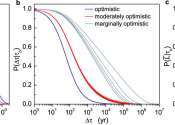Instrument to measure asteroid gravity tested for space
The first instrument to directly measure gravity on the surface of an asteroid has undergone testing in ESA's Mechanical Systems Laboratory.

The first instrument to directly measure gravity on the surface of an asteroid has undergone testing in ESA's Mechanical Systems Laboratory.
Space Exploration
May 22, 2023
0
3

The Arecibo Telescope was an amazing tool for astronomers. Built in the early 1960s, it had a 1,000-foot-wide dish and was capable of both receiving and transmitting radio signals. It did radar mapping of near-Earth asteroids, ...
Astronomy
May 22, 2023
1
77

A multi-institutional team exploring the physics of collective behavior has developed and measured a model nanomagnetic array in which the behavior can be best understood as that of a set of wiggling strings. The strings, ...
Nanophysics
May 4, 2023
0
138

GOES-U, the fourth and final satellite in NOAA's GOES-R Series, recently completed a successful test deployment of its solar array to ensure it will function properly in space.
Space Exploration
May 4, 2023
0
3

The search for radio signals from extraterrestrial civilizations has yet to yield evidence of alien technological activity. Research carried out at EPFL suggests we continue searching while optimizing the use of available ...
Astronomy
Apr 28, 2023
3
264

The glowing dots in these images are single rubidium atoms, pristinely arranged in arrays about as wide as a human hair. The team of CQT Principal Investigator Loh Huanqian captured these pictures to show how they can assemble ...
Optics & Photonics
Apr 26, 2023
0
76

After upgrading the radio telescope array at Westerbork, The Netherlands, astronomers have found five new fast radio bursts. The telescope images, much sharper than previously possible, revealed that multiple bursts had pierced ...
Astronomy
Apr 12, 2023
0
163

Multispectral imaging has fueled major advances in various fields, including environmental monitoring, astronomy, agricultural sciences, biomedicine, medical diagnostics and food quality control. The most ubiquitous and primitive ...
Optics & Photonics
Apr 6, 2023
0
12

Preparing the Juice mission to Jupiter has involved testing for all kinds of contingencies, down to the smallest of scales. This microscopic view shows surface damage to a tiny silver interconnector after being exposed to ...
Space Exploration
Apr 5, 2023
0
8

Using the Atacama Large Millimeter/submillimeter Array (ALMA), an international team of astronomers has performed high-resolution observations of an M-dwarf star known as 2MASS J04124068+2438157. Results of the observational ...